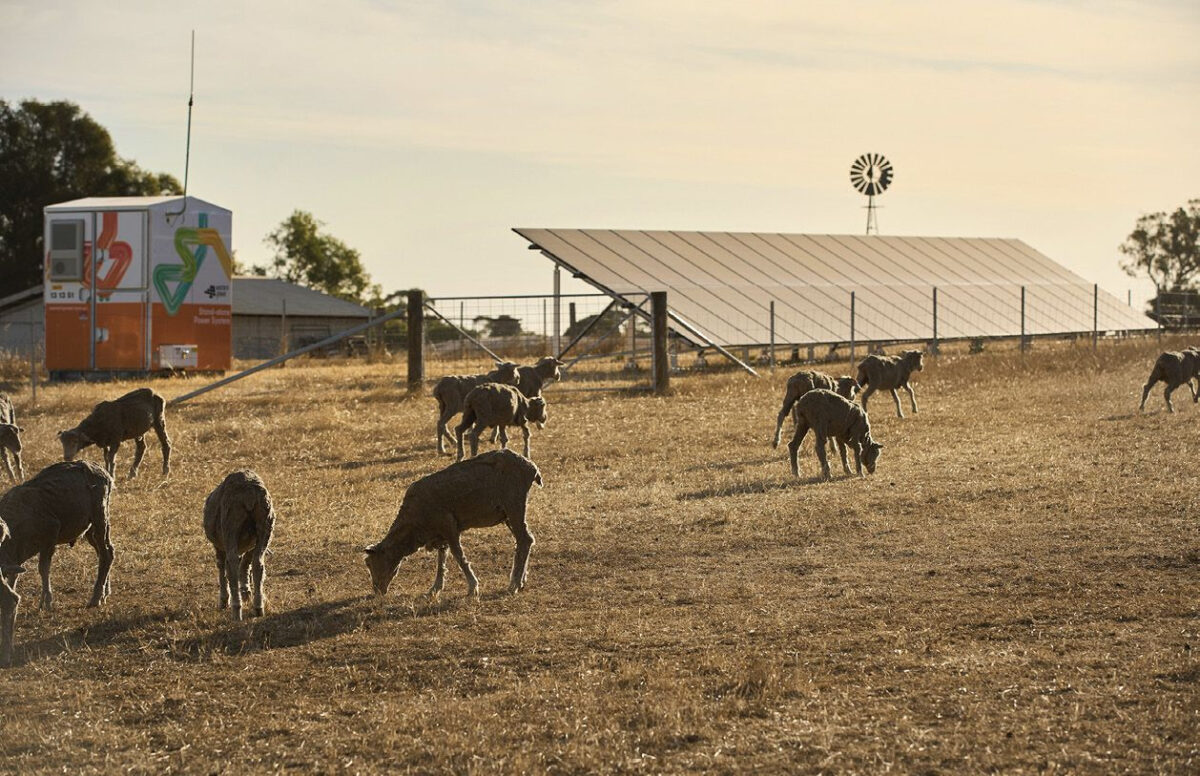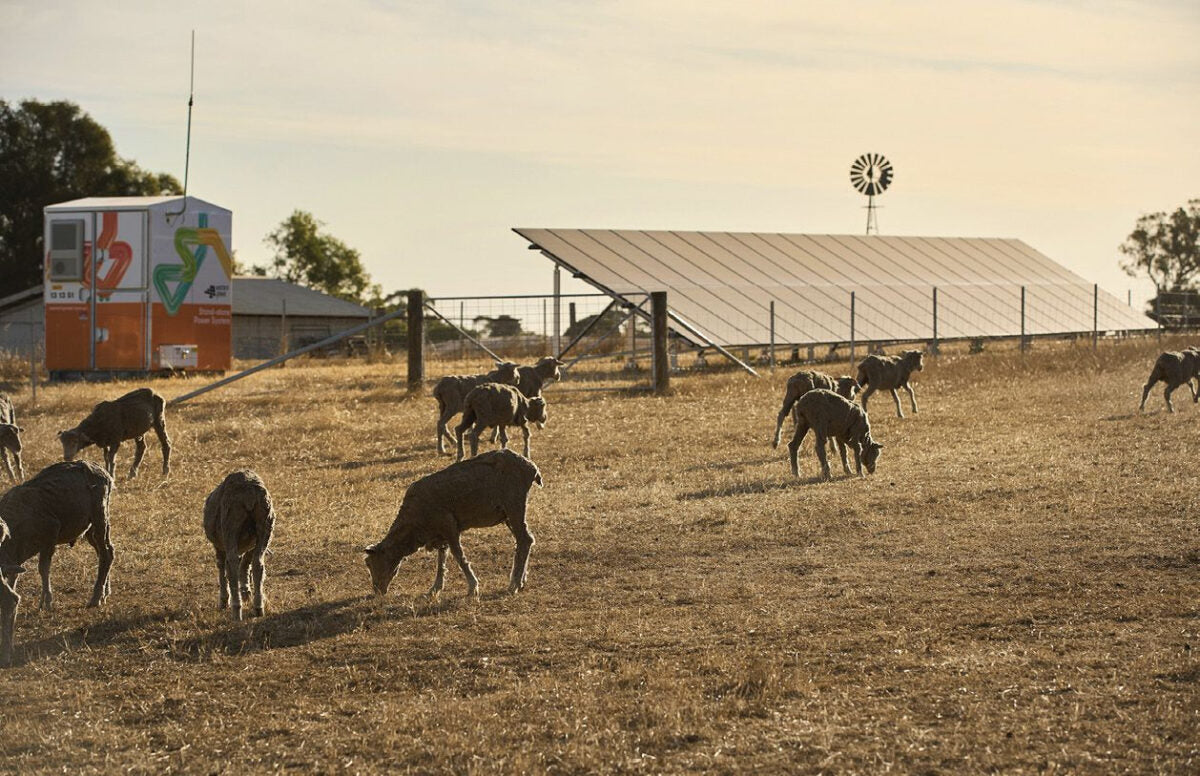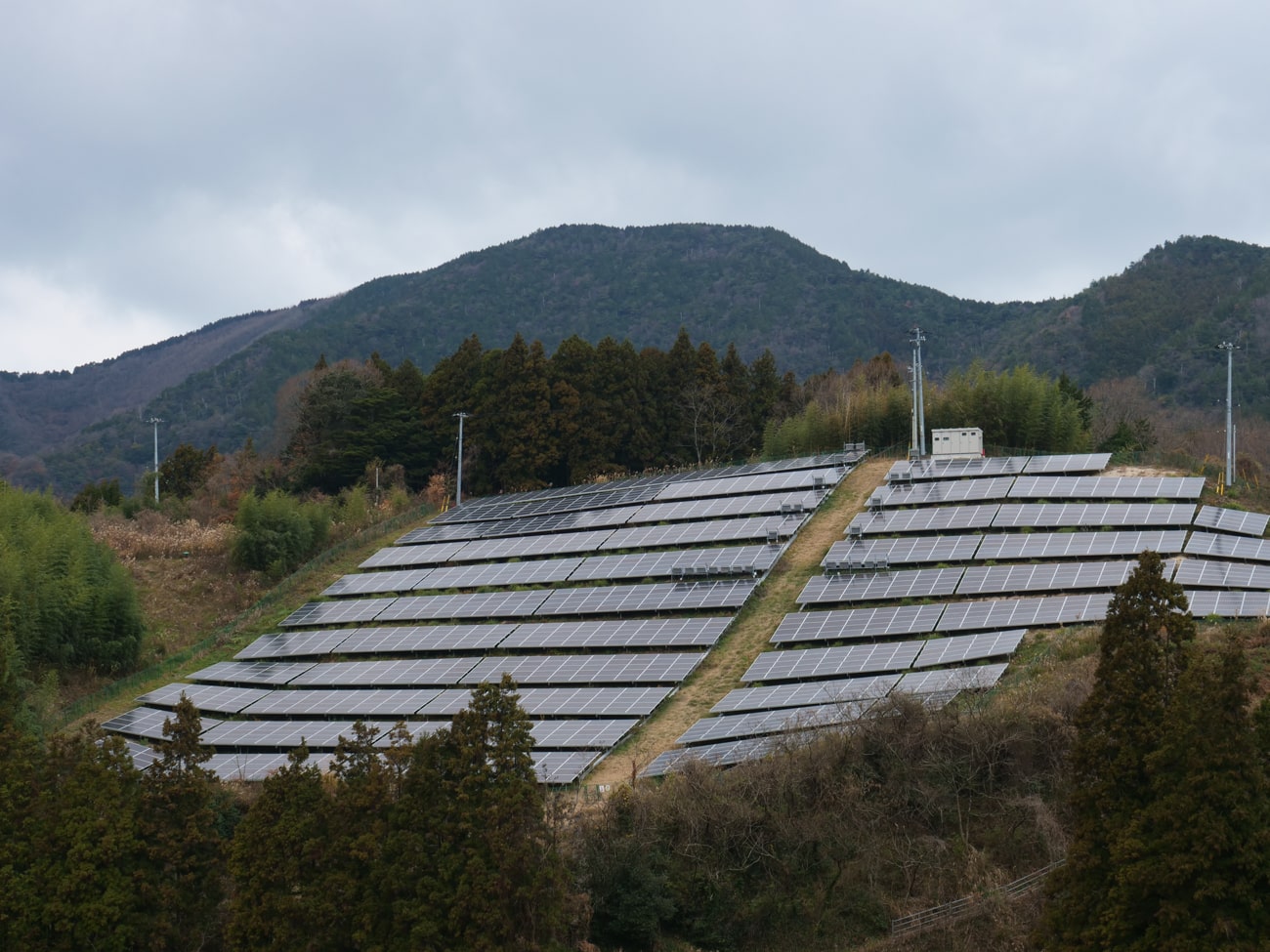https://www.pv-magazine-australia.com/2023/10/14/weekend-read-feeding-the-appetite-for-low-carbon-food/
Feeding the appetite for low-carbon food

Standalone power systems have been effective in winning over skeptical farmers and delivering cleaner, more reliable electricity.
Photo: Western Power
From pv magazine ISSUE 10/23
In the 23 years Anika Molesworth’s family has been living on their sheep station in far western New South Wales (NSW), Australia, the years of drought have outnumbered the years with rain. From the age of 12, Molesworth has experienced the realities of farming dry, red land. This led her to study agricultural and environmental science, the field of her PhD, and inspired her to co-found the campaign group Farmers for Climate Action.
Agriculture, said Molesworth, “is one of the biggest problems contributing to climate change; it is one of the most vulnerable industries to the impacts climate change; and it’s pretty much one of the most important sectors to the solutions for climate change. It’s this incredible piece of the puzzle [for which responsibility lies with] very remote, rural people.”
The Molesworth family are looking to add 15 kWh of battery storage to their existing rooftop solar system, as well as 30 kWh to another homestead that will also soon have a 15 kW rooftop system. To get a quote for the job, the Molesworths had to call a specialist from Adelaide, South Australia – a 1,200 km round trip – or around 12 hours of driving.
“The tyranny of distance for rural people adds huge extra costs,” Molesworth says. “So people who are still a bit on the fence or don’t have that financial luxury, they probably aren’t bringing someone up.
“Farmers who are very remote have a real issue with actually getting services and information to them,” she adds, noting suppliers and installers are also scarce.
This scarcity is particularly problematic because designing and configuring renewables systems for farms requires significant expertise. It’s a core research topic for Dani Alexander, CEO of the University of New South Wales’ (UNSW) Energy Institute, who also grappled with the subject during her time as research director of the Institute of Sustainable Futures at the University of Technology Sydney.
Load profiles
Farm energy use differs radically depending on what is being produced and how the business operates. For instance, dairy farmers tend to draw electricity from 5:00 a.m. to 10:00 a.m. and then again from 3:00 p.m. to 8:00 p.m. – a load profile with twin peaks. In December 2022, Alexander and her team published the findings of case studies examining power usage across five farms, modelling how to best match renewables resources and loads. They found significant variations, with some farms potentially cutting 30% of their energy costs with an optimised solar plan and one in particular showing cost-cutting potential as high as 90%.
“It’s really about understanding the site itself and then matching the resource to the need; noting where there are flexibility opportunities to actually match the need to the resource,” said Alexander.
The next part of the project will see the group work with farmers to deploy these optimised systems in the real world, which introduces new challenges. Alexander’s research has been financially supported by the New South Wales government and the state recently funded a series of “on-farm energy pilot projects,” deploying a range of technology for agricultural ends.
Such support is underpinned by the fact that government and industry now recognise looming changes to global export regulations. The European Union is reforming its regulations around agricultural imports while in Australia the nation’s two leading supermarkets are altering their wholesale buying patterns in a bid to hit 2030 decarbonisation targets.
Demand grows
Agricultural businesses, especially exporters such as Stahmann Webster, are trying to stay ahead of the curve. With 73% of the company’s emissions associated with processing stages, Stahmann Webster is investigating floating solar systems and currently has a multi-million dollar proposal from a major Australian energy “gentailer” under assessment.
Floating solar is an intriguing solution for the company, which relies heavily on irrigation from captured water and boasts large dams. Not only would floating solar utilise that space, it reduces evaporation.
“Being in agriculture in Australia, soil is great but it’s all about water,” said Steve Mackinlay, head of environmental, social, and corporate governance and sustainability for Stahmann Webster. “We lose 10% of that [captured] water annually.” He said the water protection potentially provided by floating solar would be “a really big deal.”
What gives Mackinlay pause, however, is the proposal’s battery component. “The biggest problem at the moment is the infrastructure costs against the timeline of batteries,” he said, noting that current modelling anticipates major cycling degradation in the lithium batteries before it would see real returns. This cost-to-value issue was also borne out in the NSW study by Alexander’s team, which found that adding battery storage only saved between 5% and a maximum 10% on energy costs on the assessed farms.
Like the Molesworth family farm, Stahmann Webster has also hit up against the nature of agricultural land. Their farms don’t border the outback but they have numerous orchards stretching from Queensland down through Australia’s east and encompassing a total 10,000 hectares.
Standalone opportunities
In Western Australia (WA), the remote nature of the state’s farms has led decarbonisation efforts in a different direction. There, the two government-owned utilities that serve the state’s islanded grids, Western Power and Horizon Power, have been rolling out off-grid, standalone power systems, or SPS’, to decrease maintenance costs and increase rural power reliability. Primarily run on solar and batteries, SPS’ do have backup diesel generators but each company sizes systems to maximise renewables generation, with Western Power targeting 90% and Horizon Power 80% to 90%.
“Of the 69 SPS units we have already installed in regional WA, 62 of them have been installed on farming properties,” Horizon Power Project Manager Joe Dines tells pv magazine. Western Power reported a similar trend, saying the “vast majority” of its 180 installations so far have been on farming and mixed-use properties.
Neville McDonald is one such farmer. He owns cropland in Condingup, WA. So far, he has two SPS systems connected and another five in the installation process. On average, his systems comprise 10.8 kWp of solar, a 16 kW inverter, 25.2 kWh of batteries, and a 20 kVA backup diesel generator.
The SPS units are owned, monitored, and serviced by Horizon Power, which sells the electricity back to McDonald at his previous grid rate.
“Horizon Power are getting rid of all our powerlines which is magnificent because powerlines are a pain in the ass for us,” McDonald says. “They get in the road of our machinery, they light fires in the summertime. I’m not a greenie by any stretch of the imagination but I think it’s good to be renewable to some degree.”
Paul Larvin, who heads up the standalone power systems division of Pacific Energy, a key installer in Western Power’s rollout, says that learning to size the systems for farms is “definitely more difficult because there’s so many more variables.” The energy use on farms tends to be highly seasonal, with sheep sheering and harvesting drawing heavily but only for a matter of weeks. Since the rollout began, in 2019, SPS design has been modified to improve modularity, allowing for additional batteries to be retrofitted when necessary.
WA’s success with SPS’, in terms of overall costs, decarbonisation, and customer satisfaction, means expectations are high. It is hoped that the SPS rollout will completely reconfigure the state’s unruly grid over the next decade with thousands, perhaps tens of thousands of systems to eventually be deployed. Eastern states are increasingly looking to the utilities’ model and changing their regulatory systems to enable SPS’ too. “I do think, in the next few years, the floodgates will open on the east coast,” Larvin tells pv magazine.
This content is protected by copyright and may not be reused. If you want to cooperate with us and would like to reuse some of our content, please contact: editors@pv-magazine.com.
<




